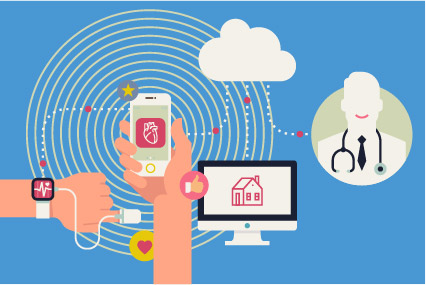Accenture report declares that “New Science” is driving industry growth

The adoption of New Science – a unique combination of the best in science and health technology that address significant unmet patient needs – is delivering more precise and effective treatments, but often at a higher price tag, according to new research from Accenture.
New Science is Accenture’s global analysis of regulated scientific treatments in both the pipeline and the market. It includes life science mechanisms, modalities and platforms that feature high on the indices of scientific novelty, unmet need, and technology convergence. Adoption of New Science in 2020 far exceeded expectations – and it is projected to drive 81 percent of biopharma revenue growth and 61 percent of all revenues between 2021 and 2026. This outpaces Accenture’s previous forecast of New Science driving 54 percent of all revenues from 2017 to 2022. And this is despite the clinical trial slowdown caused by the pandemic with 1,479 New Science and traditional trials suspended or delayed between February and August 2020.
However, COVID-19 has heightened a new economic reality that is challenging profitability. Biopharma executives we surveyed expect margins to decline in nearly every therapeutic area over the next five years (including leading categories like oncology). The only exception is cell and gene therapy. This decline is expected to be over six percent on average, with anti-infectives expected to experience the largest decline at 11.6 percent.
“The investment in scientific innovation is born by all stakeholders and felt most deeply by patients. Now the goal must be a maximising return on that investment for patients, too. There are better, faster ways to deliver innovation—2020 proved that. Today’s economics demand it and society needs it,” said Stuart Henderson, Accenture’s global lead of the Life Sciences industry group. “Biopharma companies can approach this challenge from both sides of the profitability equation—in discovering and developing treatments and bringing them to market.”
Biopharma companies have the opportunity to:
- Improve the way treatments are discovered and developed while lowering the cost to do so from “billions to millions” by riding the wave of innovation that produced several COVID-19 vaccines in record-breaking time.
- Redefine biopharma companies’ economic relationships with customers, capturing and sharing trapped value where it matters most for the ecosystem.
To achieve this, biopharma companies should continue to build on some of the practices put in place during the pandemic such as accelerating the use of digital solutions, as well as scientific and regulatory innovation. In response to the crisis, virtual clinical trials grew by over 50 percent in 2020; if companies continue with this approach, they could triple by 2022, cutting costs, while also improving access and inequities in diversity.
More data-led drug discovery could also reduce go-to-market costs. This includes using advanced biomarker discovery capabilities with deep learning and predictive modelling. Accenture’s Applied Intelligence practice has demonstrated that data and AI technologies can drive additional value for clinicians and researchers, including clinical trial management, and helping improve disease understanding to better and faster identify, validate, and optimise targets at low risk of falling during development.
Improving treatment discovery and development and lowering its cost is only one part of the solution to the new economic reality of the industry. Life sciences companies should also have more flexibility in their economic relationship with customers, stakeholders, and markets.
This likely includes rethinking how treatments are priced, paid for, and distributed. It may mean that new disruptive commercial models (such as direct-to-consumer) should be considered to increase differentiation and net revenue for hyper-competitive treatments with heavy pricing pressures. Other therapeutic areas with high value-to-cost ratios will likely call for novel evidence or reimbursement or payment models to establish treatment price and value. For example, high-cost treatments for rare diseases could involve installment-based payments or outcomes-based reimbursement models. By allowing patients to participate in the value these new economic business models bring — such as tying patient out-of-pocket costs to outcomes — New Science could deliver on its success for both patients and biopharma companies.
“By embracing New Science, biopharma companies are driving better health outcomes and delivering more personalised treatments, but they also must continue to have the courage to question and upend traditional orthodoxies for how treatments are developed and delivered to people around the world. They have already proven things can be done differently in remarkable ways with great benefit to all,” concluded Henderson.
READ MORE:
- Inside Mimecast’s The State Of Brand Protection 2021
- ServiceNow delivers new security integrations with Microsoft
- Microsoft and Darktrace join forces to provide self-learning AI cybersecurity to users
- What can corporates learn from digital transformation in the COVID era?
The report is available here.
Accenture’s Life Sciences industry group helps pharmaceutical, biotech, medical technology, distributor and consumer health companies combine the latest technology with scientific breakthroughs to revolutionise how medical treatments are discovered, developed and delivered to patients around the world.
For more news from Top Business Tech, don’t forget to subscribe to our daily bulletin!
